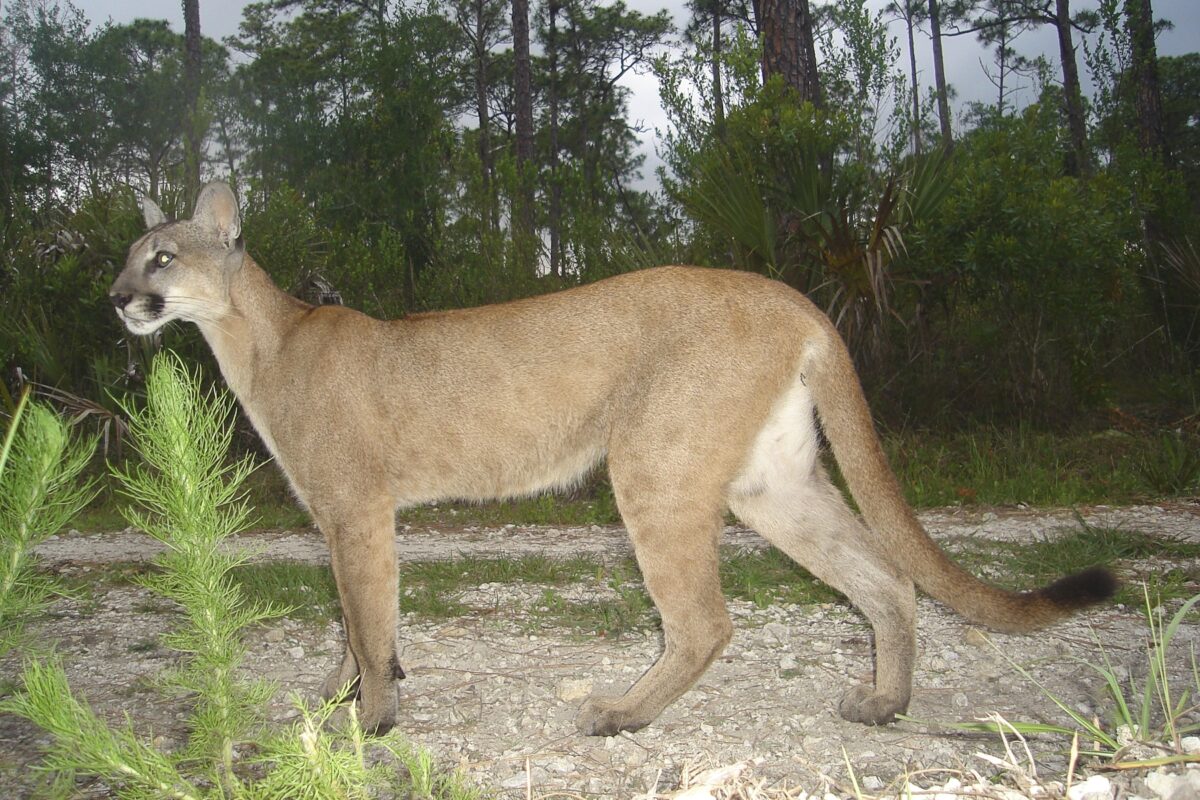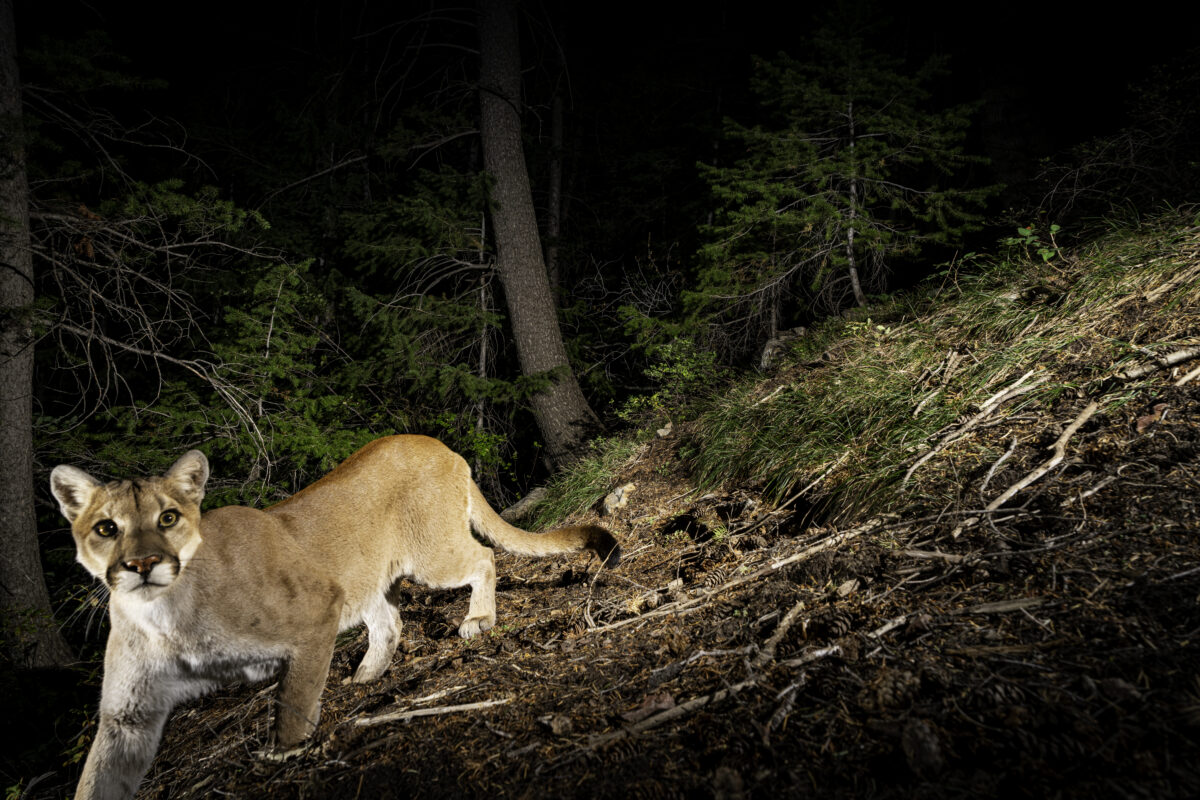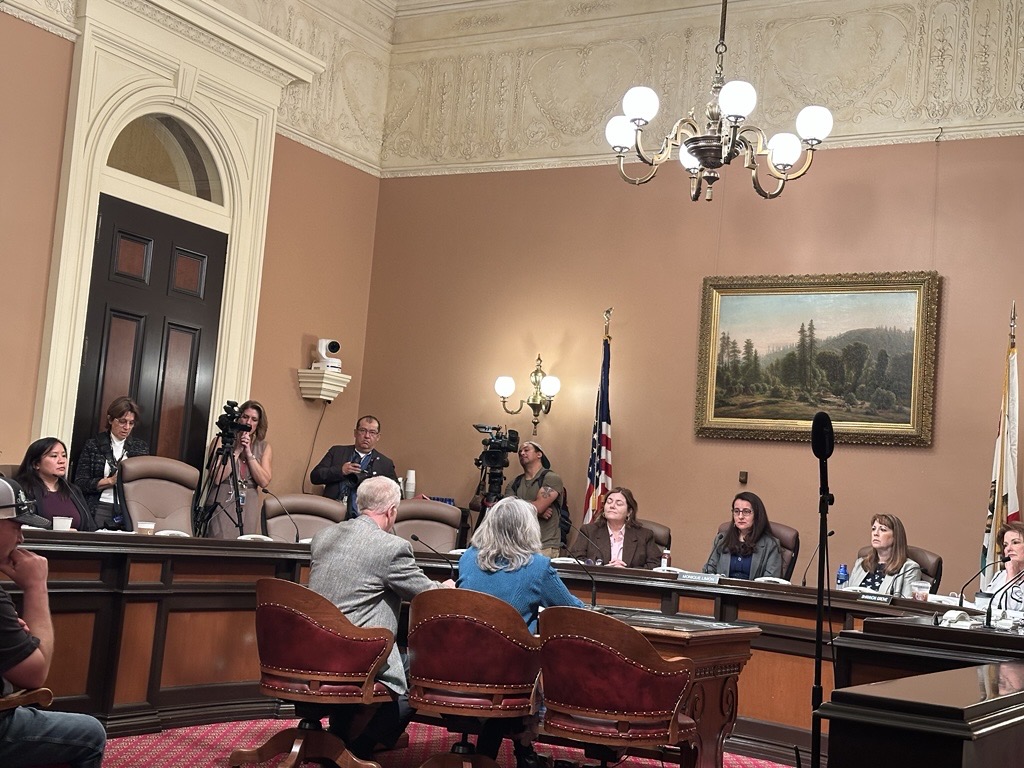How Many Lion Hunters are There? — Really
The editorial voice of the Mountain Lion Foundation
Since the European colonization of this continent, America’s lion population has been persecuted and hunted to the point where, with the exception of the small clump hanging on to existence by their claws in the Florida Everglades, only fourteen western states are considered to still have viable populations.* With possibly any other animal, such a massive reduction in a species’ historic population size and range would have spurred nationwide protection measures. Instead lions are treated as pariahs of the animal kingdom considered worthy only for the amount of recreational fun they can provide to lion-hunters.
In the 1990s, when the citizenry of Oregon and Washington tried to stop the slaughter, their state legislators intervened on behalf of  pro-lion hunting interests. The state game agencies implemented new regulations and policies apparently designed to hamper or negate the successful ballot-box reforms. Such political clout begs the question of exactly who these political leaders and bureaucrats represent–the people or special interests groups–especially since public polls have repeatedly shown that the majority of Americans like mountain lions and don’t want to see them hunted.
pro-lion hunting interests. The state game agencies implemented new regulations and policies apparently designed to hamper or negate the successful ballot-box reforms. Such political clout begs the question of exactly who these political leaders and bureaucrats represent–the people or special interests groups–especially since public polls have repeatedly shown that the majority of Americans like mountain lions and don’t want to see them hunted.
When the Mountain Lion Foundation decided to look into the question of just how many lion hunters there actually are, we discovered that such information wasn’t readily available to the public. Possibly because of the public’s volatile reaction to the blood-sport, many state game agencies appear reluctant to post lion-hunting related information, including the number of hunters. But based on information gathered from several sources it is possible to at least make a ball-park estimate on the size of this extremely powerful and vocal special interest group.
According to the U.S. Fish and Wildlife Services’ 2006 National Survey of Fishing, Hunting, and Wildlife-Associated Recreation Report, there were an estimated 12.5 million hunters in America. While that sounds like a lot, it’s actually a 10 percent reduction from numbers reported just ten years earlier and represents only 4 percent of the 300 million people living in our country at that time. This base-line number is further reduced to only 578 thousand when all the exclusive deer, elk, bear, wild turkey, small game and migratory bird hunters are removed from the mix, and only those who also list themselves as “Other Big Game” hunters are counted. So, based on USFWS’ official estimate, six years ago there was statistically less than 1 percent (0.001927) of the nation’s population that might have hunted lions.**
 Interestingly, the 2006 estimate is a reversal in the overall hunter participation trend with an increase of just over 11 percent from the 1996 estimate of 513,000 hunters. A review of hunter information reported by various state game agencies shines some light on this anomaly. During that same ten-year period, some states (Oregon and Washington in particular) implemented cut-rate, license-bundling practices designed to generate a support-base amongst deer hunters for recreational lion hunting. At last count the annual number of lion hunting tags sold in those two states were running close to 40,000 and 65,000 respectively.
Interestingly, the 2006 estimate is a reversal in the overall hunter participation trend with an increase of just over 11 percent from the 1996 estimate of 513,000 hunters. A review of hunter information reported by various state game agencies shines some light on this anomaly. During that same ten-year period, some states (Oregon and Washington in particular) implemented cut-rate, license-bundling practices designed to generate a support-base amongst deer hunters for recreational lion hunting. At last count the annual number of lion hunting tags sold in those two states were running close to 40,000 and 65,000 respectively.
But how many of these Pacific Northwest based so-called lion hunters, or their counterparts in states with similar practices, would actually purchase a lion hunting tag if it wasn’t cheap and bundled with a deer hunting tag? In South Dakota for example, the number of lion hunting tags sold dropped by 40 percent when that state’s lion hunting tag was no longer sold as incidental to a deer hunting tag. California had a similar experience. During its only two lion hunting seasons (1970 & 1971), 4,719 lion hunting tags were sold the first year when they were combined with deer hunting tags, but demand dropped sharply the following year to only 133 when sold as an exclusive game tag. Apparently there are far fewer hunters in America that actually want to go out and kill a lion when you exclude opportunistic hunters that don’t care one way or another, but are willing to kill one if it comes their way and doesn’t cost too much to do so.
The bottom line is that despite more than 15 years of effort on the part of state game agencies and groups such as Safari Club International to build a lion-hunting constituency, the number of actual lion hunters remains only an miniscule proportion of the total hunters in America, and would possibly be significantly smaller if this valuable wildlife resource wasn’t thrown away for less than the cost of a six-pack of imported beer!
So now Americans have to ask the question: Why do we continue to allow such a small portion of our society kill thousands of lions each year, and practically for free?
Maybe it is time to change the policies, goals, and decision making processes of the state game commissions?
* Breeding pairs in sufficient number to expand the current population.
** This estimate may be a little high because that particular category of game species is not exclusive to lions.
Similar articles and other relevant information
Guest Commentary: Who owns the wildlife and who should have say in how they are managed or mismanaged?
USFWS 1996 National Survey of Fishing Hunting and Wildlife Associated Recreation Report
USFWS 2006 National Survey of Fishing Hunting and Wildlife Associated Recreation Report



 Facebook
Facebook Twitter
Twitter Send Email
Send Email


